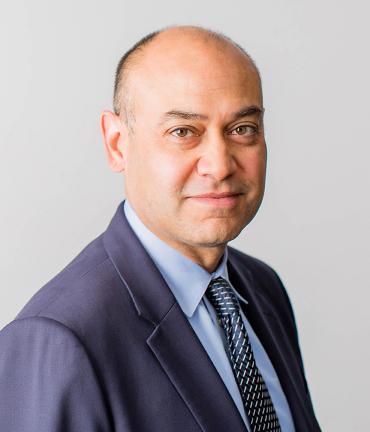
Medulloblastoma
Medulloblastoma is a malignant (cancerous) brain tumor that arises from the cerebellum, the part of the brain that controls balance, coordination, and other complex functions. This type of tumor can grow rapidly and spread (or metastasize) to other parts of the brain or spinal cord.
Some of the most common symptoms include the following:
- Headaches
- Nausea
- Vomiting
- Clumsiness or similar balance problems
- Vision problems
Symptoms will depend on the exact location of the tumor and which nerves are affected, but most patients experience headaches, nausea, vomiting, and fatigue. These symptoms often occur as pressure increases in the brain – usually from the tumor compressing fluid cavities in the brain and blocking normal flow, but can also occur from direct pressure from the tumor.
Tumors that expand into the fluid cavities of the brain (also called ventricles) can cause a buildup of cerebrospinal fluid that causes the headaches and nausea. In infants, this buildup of cerebrospinal fluid can result in the symptom of an enlarged head.
Since medulloblastomas originate from the cerebellum, a brain region responsible for coordinated movement, problems with balance and coordination are also common. Additional symptoms may occur if the tumor spreads to other brain regions or the spinal cord.
Medulloblastoma is relatively rare, with an estimate of 400 new cases diagnosed in the United States in 2017.1 Although rare, medulloblastoma are among the most common malignant brain tumors in children, accounting for about 6.7% of all primary brain tumors in children and adolescents.1
Although most commonly diagnosed in children, medulloblastoma can also occur in adults. For most patients, the cause of medulloblastoma is unknown. However, there are a few rare, genetic syndromes that may increase a patient’s chance of developing medulloblastoma. This include conditions like Gorlin’s Syndrome, which is caused by mutations in the PTCH1 gene that helps regulate cell growth.2
Medulloblastoma can be classified into a number of subtypes, based on how the tumor looks under a microscope (its histological characteristics), or the specific mutations it has (its genetic characteristics).
Histological classifications include the following, and are based on factors like cell size, shape, and clustering:
- Classic medulloblastoma
- Desmoplastic / Nodular Medulloblastoma
- Medulloblastoma with Extensive Nodularity
- Large Cell / Anaplastic Medulloblastoma
- Anaplastic Medulloblastoma
Genetic classifications include the following, and are based on specific mutations in the tumor cells, and the molecular pathways that are affected as a result:
- WNT-activated medulloblastoma
- SHH-activated medulloblastoma
- Non-WNT / non-SHH activated medulloblastoma
Medulloblastoma subtypes are identified based on the combination of a tumor’s histological and genetic classifications; certain combinations have different prognoses, and can react to therapies differently. At UCSF, our patients with medulloblastoma receive personalized treatment plans that take both the tumor’s histological and genetic characteristics into account.
Medulloblastoma is most effectively treated with a combination of therapies that include surgery, radiation therapy, and chemotherapy. Surgical removal of the tumor is important and usually the first step in treatment. The primary goals of the surgery are the following:
- Remove as much of the tumor as possible, without causing neurological deficit
- Relieve pressure in the brain from buildup of cerebrospinal fluid
- Collect a tissue sample for diagnosis
After the surgery, analysis of the tissue sample allows for the classification of the tumor’s histological and genetic characteristics. Additional treatments are planned accordingly, depending on medulloblastoma subtype, as well as the amount of residual tumor.
In general, for patients that are 3 years or older, surgery is usually followed by radiation treatment to the entire brain and spine, followed by several months of chemotherapy.
In very young children (under 3 years old), standard treatment includes surgery and chemotherapy. These young patients usually cannot tolerate radiation to the entire brain and spine. In some cases, clinicians may be able to use radiation therapies like Gamma Knife or IMRT that specifically target the tumor site and minimize radiation exposure to the rest of the brain.
How well a patient responds to treatment depends on a variety of factors, including the following:
- Age at diagnosis
- Medulloblastoma subtype
- Tumor size
- Amount of tumor that can be surgically removed
- Level of tumor metastasis
Some medulloblastoma subtypes are especially resistant to treatment, but many patients have better outcomes with aggressive treatment. Nearly 80% of pediatric patients (3 years or older) with non-metastatic medulloblastoma are long-term survivors, if the tumor is completely removed and also treated with radiation and chemotherapy.3 Patients with “high-risk disease,” if their tumor has spread or cannot be fully removed by surgery, can still be cured, but rates are lower.
Although conventional treatments can be effective for many patients, some survivors are at risk for developing long-term side effects. Especially for pediatric patients, radiation and chemotherapy may increase risk of learning disabilities, hearing loss, fertility issues, or secondary cancers (like leukemia) that can develop later in life. However, your doctors will discuss how these risks apply to your or your child’s personalized treatment plan. Ongoing research at UCSF aims to identify more effective treatment strategies with fewer long-term complications to the patient.
In the case of recurrent tumors, experimental treatment options may be available through clinical trials that are testing new strategies. UCSF is currently conducting a phase I trial of an oncolytic virus that targets the protein CD46, which is highly overexpressed by medulloblastoma and AT/RT cells. When the oncolytic virus recognizes CD46 it causes cell destruction and tumor regression. This first-of-its-kind therapy is a new, targeted treatment option for patients with recurrent tumors that cannot be cured with standard care.
Finding information about specific prognoses and survival rates is a personal decision. The current statistics are only summary data, and don’t necessarily reflect results from new or experimental therapies. These data do not determine how individual patients might respond to their treatment – everyone is different. That said, some people may choose to look for this information, which can be found in the most recent CBTRUS Statistical Report, in Tables 21-25.1
- Ostrom, Q.T., et al., CBTRUS Statistical Report: Primary brain and other central nervous system tumors diagnosed in the United States in 2010-2014. Neuro Oncol, 2017. 19(suppl_5): p. v1-v88.
- Fujii, K. and T. Miyashita, Gorlin syndrome (nevoid basal cell carcinoma syndrome): update and literature review. Pediatr Int, 2014. 56(5): p. 667-74.
- Taylor, R.E., et al., Results of a randomized study of preradiation chemotherapy versus radiotherapy alone for nonmetastatic medulloblastoma: The International Society of Paediatric Oncology/United Kingdom Children's Cancer Study Group PNET-3 Study. J Clin Oncol, 2003. 21(8): p. 1581-91.
Surgical Specialists
This content was reviewed by UCSF pediatric neurosurgeon, Nalin Gupta MD, PhD.



